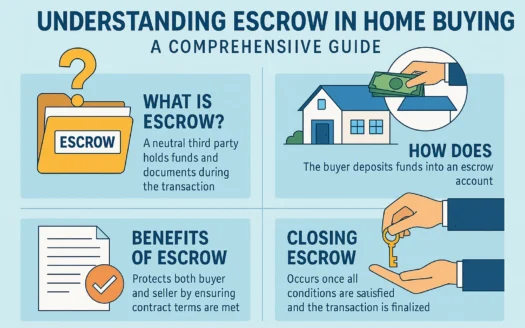You’re Ready to Sell Your Home: 10 Key Documents to Prepare for a Smooth Transaction

You’re Ready to Sell Your Home: 10 Key Documents to Prepare for a Smooth Transaction
You’re ready to sell your home, while your buyer is even more eager for you to hand over the keys so they can move in. But first, paperwork – and there’s a mountain of it. Procuring all of the important documents you need is a crucial step in the home-selling process that’s involved in almost every step of the way. By closing, buyers and sellers alike will have reviewed and signed a mountain of documents to legitimize the sale.
To help you familiarize yourself with what’s in store, here’s a look at the 10 key documents you’ll encounter during the home-selling process. Each document sheds light on various aspects of your home, ensuring you’re well acquainted with every detail of your property and the terms of the transaction.
1. Mortgage Pre-Approval Letter
Homebuyers often rely on a mortgage to get onto the property ladder, so a pre-approval letter from their lender is essential. This document states the amount the buyer can borrow and is one of the first steps in the homebuying journey. While not a guarantee of final approval, it demonstrates a buyer’s seriousness and financial credibility. Note that pre-approval requires a deeper financial review than pre-qualification, which offers a rougher estimate.
2. Home Appraisal
Lenders require a home appraisal to assess the property’s current market value. Conducted by a third-party appraiser, this evaluation includes a physical inspection, neighborhood comparisons, and analysis of the home’s condition. A low appraisal can lead to renegotiations or even a canceled deal. Sellers in unique homes may opt for a pre-appraisal to set realistic pricing.
3. Home Inspection Report
A home inspection focuses on the property’s structural and mechanical condition, checking for issues like faulty wiring, plumbing, or pest infestations. Buyers often include inspection contingencies in their contracts, allowing them to back out if major problems arise. Sellers can proactively order a pre-listing inspection to address issues early.
4. Your Home’s Listing
The listing is your home’s sales pitch, detailing specs like square footage, room dimensions, included appliances, and unique features. Buyers should cross-reference this with the fittings and contents form and seller’s disclosure, which legally require sellers to disclose known issues (e.g., pests, lead paint).
5. Purchase Agreement
This legally binding contract outlines the sale’s terms, including price, closing date, contingencies (e.g., financing, inspections), and possession details. Both parties should retain a copy and adhere strictly to its conditions. Common clauses include “kick-out” clauses for sellers and financing contingencies for buyers.
6. Energy Audit
A home energy audit evaluates energy efficiency, identifying areas where improvements could reduce utility bills. Buyers of older homes may request this report to anticipate costs, while new homeowners can use it to optimize efficiency. The U.S. Department of Energy estimates audits can save homeowners up to 35% annually on energy costs.
7. Home Insurance Documents
Lenders require proof of homeowners insurance before finalizing a mortgage. Keep your policy’s declaration page handy, which summarizes coverage limits and deductibles. Review premiums and coverage details to ensure they meet your needs.
8. Title Search and Deed
A title search confirms the seller legally owns the property and identifies any liens or claims. The deed transfers ownership officially. Buyers typically purchase title insurance to protect against future disputes.
9. Closing Disclosure
This document itemizes all closing costs, including loan terms, fees, and taxes. By law, buyers must receive it at least three days before closing to review for accuracy.
10. Final Walk-Through Checklist
Conducted shortly before closing, the final walk-through ensures the home is in the agreed-upon condition. Use a checklist to verify repairs are complete, appliances are present, and no new damage exists.
Final Tip: Keep all documents organized in a secure folder – physical or digital – for easy reference during negotiations, closing, and even after the sale. Preparation and attention to detail can turn a mountain of paperwork into a smooth path to closing day.




